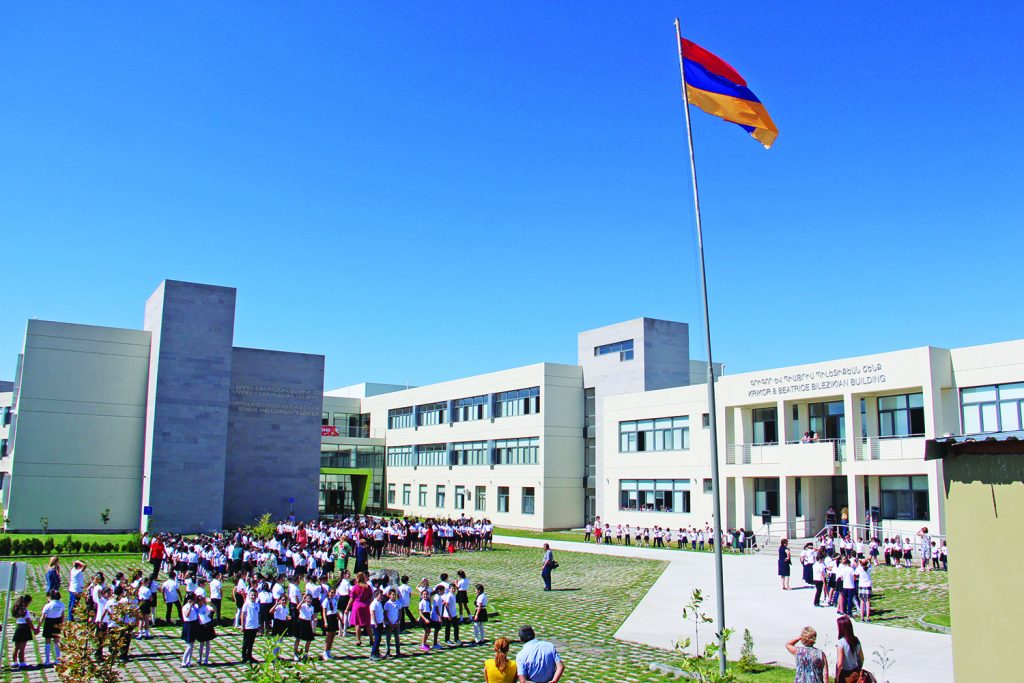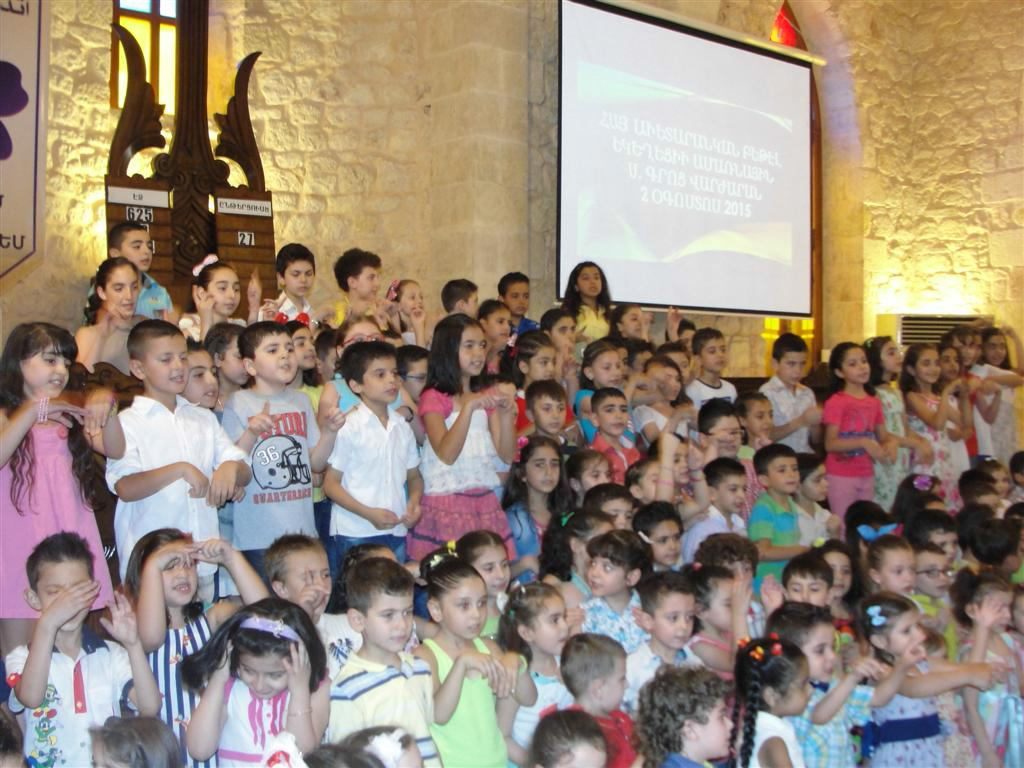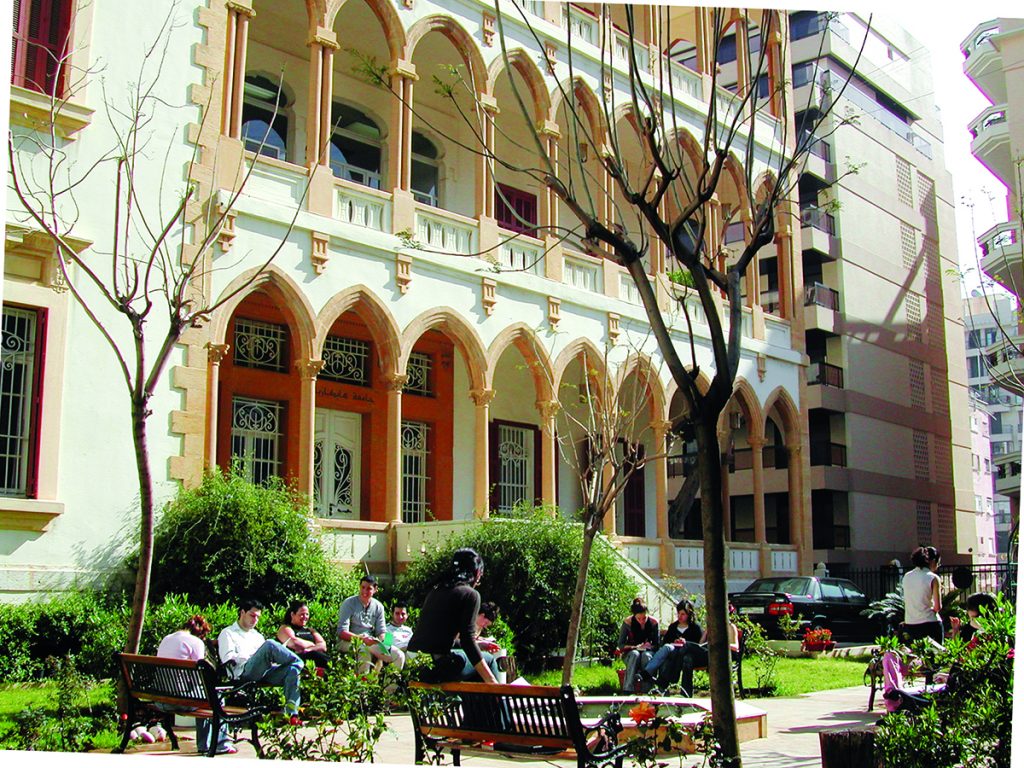100th Anniversary of AMAA to be Celebrated On East And West Coasts
PARAMUS, N.J.—The Centennial of any organization is an event of great pride and celebration. For the Armenian Missionary Association of America (AMAA), it is even more reason to continue its successful, century hammered programs of education, humanitarian work, youth camps, scholarships, and evangelism.

On October 21, the AMAA will celebrate its Centennial on the East Coast at its annual meeting, followed by a grand banquet at the Glenpointe Marriott in Teaneck, N.J. The West Coast celebration of the centenary will follow in California in October of 2018.
On October 21, the AMAA will celebrate its Centennial on the East Coast at its annual meeting, followed by a grand banquet at the Glenpointe Marriott in Teaneck, N.J. The West Coast celebration of the centenary will follow in California in October of 2018.
In a recent interview with AMAA Executive Director and CEO Zaven Khanjian at the AMAA headquarters in Paramus, he explained that the centennial celebrations are combined with a fund-raising campaign with the express goal of raising $20 million in the next two years. The campaign, which began in October of 2016, has raised until today four and a half million dollars through pledges and donations.
Auspicious Beginnings
It was a century ago, that the AMAA was created at a church union membership meeting in Worcester, Mass. “When the AMAA founded in 1918, there were more than 100,000 widows and orphans throughout the Middle East. We answered the call to meet their physical, spiritual and educational needs, and we are still answering the call for those in need in 24 countries around the world, including Armenia, Artsakh, the CIS, the Middle East, Europe, Canada, South America, and Australia,” Khanjian revealed.
The AMAA entered Armenia following the 1988 disastrous earthquake through the efforts of Rev. Dr. Movses Janbazian, the then Executive Director of the Association, with one major program centering on orphans and childcare. Registering in Armenia in 1991, shortly followed by the registration in Artsakh as a humanitarian organization, the AMAA projects grew and developed, now with 1600 children up to 18 years of age under sponsorship with thousands more in schools, Day Schools, Kindergartens, Sunday Schools and Christmas Joy programs, Khanjian related.
After 25 years in Armenia and Artsakh, tens of thousands of children have received direct monetary gifts, as well as food, clothing, medical care, day shelter and education. Over time, the AMAA started day schools with extracurricular activities and warm meals for children of parents suffering from financial and other difficulties. These institutions are currently in Shushi, two in Yerevan, Gyumri and Vanadzor.
Simultaneously, the now 170-year-old Armenian Evangelical Church, also registered in Armenia. “There is a symbiotic relationship between the AMAA and the Church. The AMAA is the missionary arm of the Church,” he explained.
There are currently 100 churches around the world, in five continents, with 31 in North America. The U.S. has eight on the east coast, 17 on the west coast, two in the mid-west, and four in Canada. Among the 100 churches functioning in difficult areas, there are two in Turkey as well as a school dedicated to the memory of martyred journalist Hrant Dink.
In Turkey, there is also Camp Armen, seized by the Turkish government and finally returned in 2015. Moreover, in Lebanon, there is the acclaimed Haigazian University, established in 1955, with a current student body of 700. Among its numerous well-known graduates are its current President, the Rev. Dr. Paul Haidostian, Historian and Scholar Dr. Yervant Kassouny, and Genocide Scholar and former Armenian Weekly editor Dr. Khachig Mouradian.

AMAA’s Khoren and Shooshanig Avedisian School in Malatia-Sepastia Region, Yerevan, Armenia (Photo: AMAA)
In addition to these areas, there has been a crucial humanitarian focus on the seven-year crisis in war-torn Syria, where the AMAA among a few other organizations commands a leading role of sustenance and support. Mr. Khanjian was influential in the creation of SARF, the Syrian Armenian Relief Fund operating out of the California since 2012 and chaired it for two years.
Education is its Bloodstream
“The AMAA is like a physical body with education as its bloodstream, the core. Armenian Evangelicals, and thousands of Armenian youth who have been educated in the Middle East after the Genocide attended Armenian Evangelical schools, with every school supported by the AMAA. Close to fifty percent of Armenian students in the Middle East have passed through the gates of Armenian Evangelical Schools sustained by the AMAA,” Khanjian revealed.
Born in Aleppo, Syria, Zaven Khanjian’s raison d’etre in life and existence comes down to “Faith Without Work is Futile.” The church, its Sunday School, and the choir were the focus of his youth. “The church and school in Aleppo have been my home,” he declared with emphasis. “They were the first kayaran (stations) for me and for the survivors, widows, and orphans.” During the Genocide, he lost both grandfathers form Arapkir.
A graduate of the American University of Beirut, majoring in Business Administration, he came to the U.S. in 1979, and worked mainly in real estate and development. He and his wife Sona (nee Kelikian), have two sons, one daughter and six grandchildren.
It is now two and a half years that he has been the Executive Director of the AMAA. “This is my love,” he declared with emphasis. “The AMAA is a unique organization. Its foundation is the spiritual life of the Armenian people. It is the combination of attention to the spiritual and physical lives of the Armenian nation that keeps me bonded to the AMAA.”
A member of the Armenian Evangelical Church, he calls the church “the focus of our lives following the teachings of Christ. Christ, God incarnate, was spirited, engaged, involved all the time and with all segments of society. Showing love and compassion, kindness and sacrifice, He reached out to all, teaching, educating, forgiving, feeding the hungry, quenching the thirsty, healing the sick and this should be our way of life as well.”
Source: Armenian Weekly
Link: 100 Years of the Armenian Missionary Association of America



